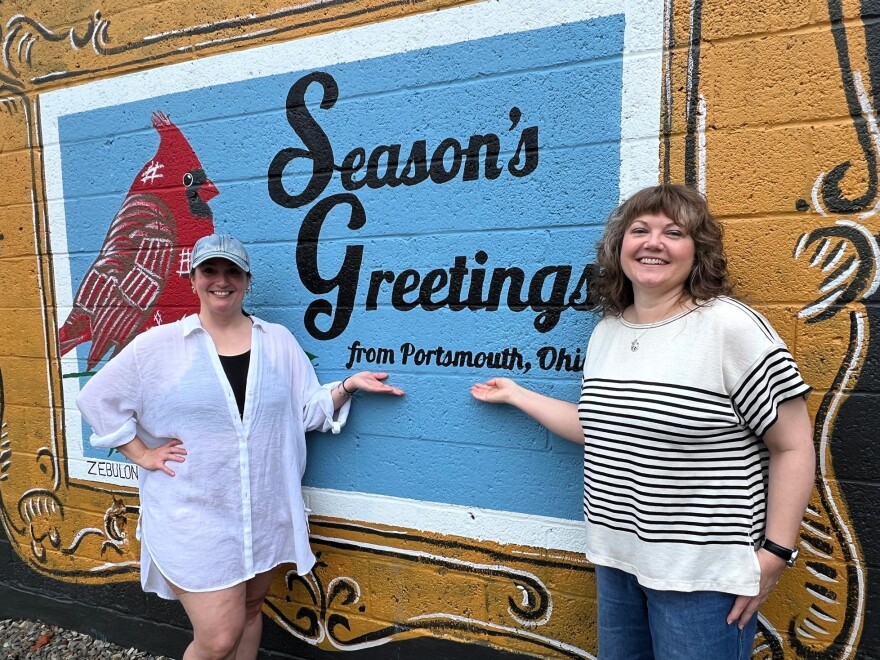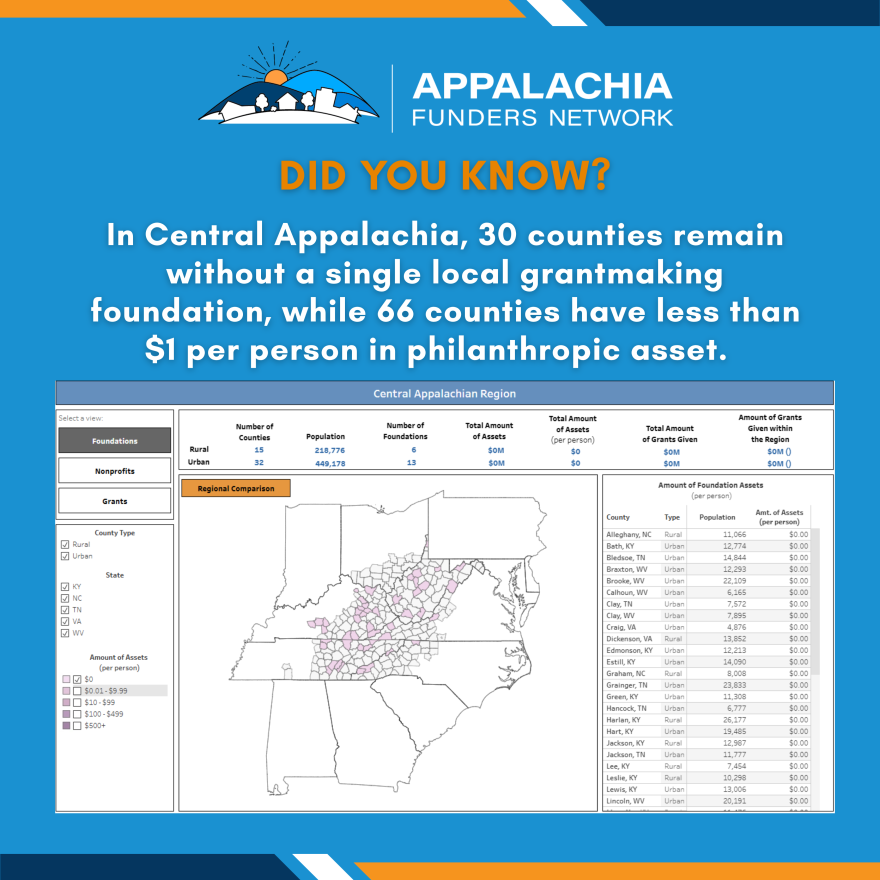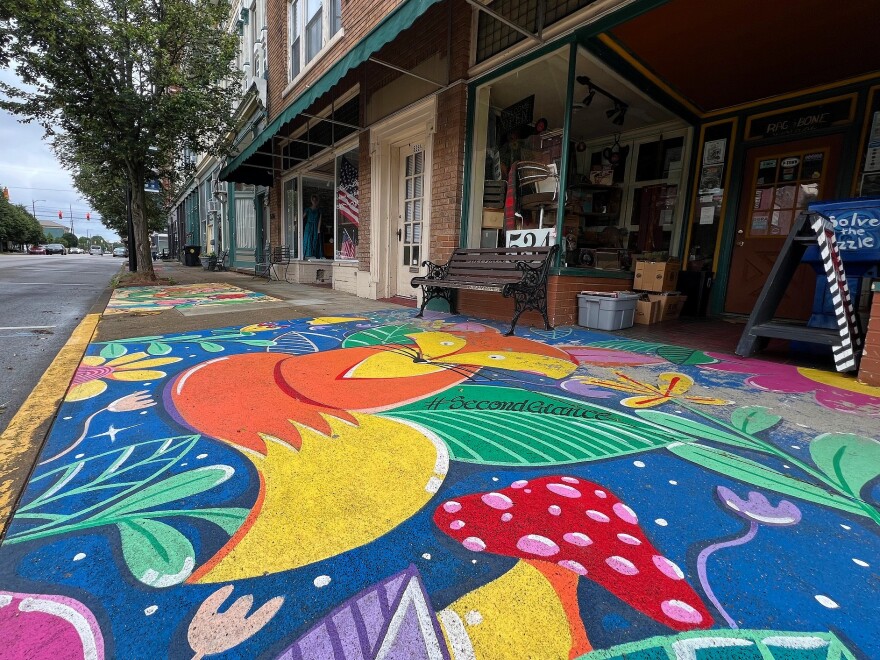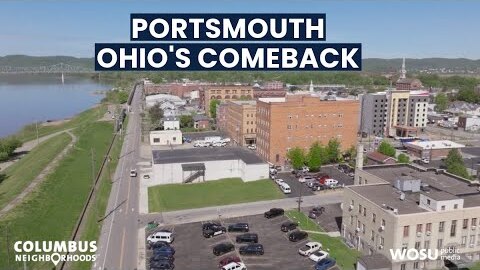The sidewalks of 2nd Street in downtown Portsmouth aren’t your typical streetside walkways.
In addition to the occasional yellow curb, they’re painted with colorful illustrations: a red fox sits on the corner, a ladybug munches on a leaf outside a vintage market. Down the street, a band of two-dimensional skeletons taps out a rhythm with drums and a fiddle.
All are products of the Trillium Project.
“We design creative placemaking projects using public art and visual art for community and economic development,” said founder and CEO Amanda Lewis. “So we are hiring local artists, we're buying supplies locally, and we are creating public artwork that brings the community together and supports small businesses here.”

Last year, the Trillium Project received a $50,000 grant from the National Endowment for the Arts for Second Glance, a two-year initiative aimed at revitalizing high-use public spaces and underserved neighborhoods with community-created art.
But like ArtWorks in Cincinnati and the Sculpture Center in Cleveland, the Trillium Project received an emailed notice from the NEA in May terminating its grant.
“We kind of had a moment of panic there, trying to figure out what we were going to do,” Lewis said.
Terminating grants for the arts
The NEA did not respond to a request for comment. But in the termination email Lewis received, it said it’s updating its priorities to “focus funding on projects that reflect the nation’s rich artistic heritage and creativity as prioritized by the President.”
Those new priorities include projects that, in the email’s words:

- Elevate the Nation’s HBCUs and Hispanic Serving Institutions
- Celebrate the 250th anniversary of American independence
- Foster AI competency
- Empower houses of worship to serve communities
- Assist with disaster recovery
- Foster skilled trade jobs
- Make America healthy again
- Support the military and veterans
- Support Tribal communities
- Make the District of Columbia safe and beautiful
- Support the economic development of Asian American communities
Lewis said the Trillium Project was able to withdraw its funds before the termination took effect.
But without federal support, it’ll be harder for the organization to pursue future projects. Already, Lewis said they’ve had to put at least three large-scale public arts projects on the back burner, and they might have to scrap the ideas altogether.
“It doesn't seem like federal funding is really going to be an option for us,” she said. “So we're going to have to focus very heavily on sponsorships, on state, local and regional grants.”
But that can be a difficult prospect in Appalachia.
Funding in Appalachia
A new report from the Appalachia Funders Network found 30 counties across central Appalachia lack an active philanthropic foundation, and 66 have less than a dollar per person in philanthropic funds.
Instead, nearly three-quarters of philanthropic investment in central Appalachia comes from funders outside the region.
But the cancelled NEA grants come on the heels of cuts to the National Endowment for the Humanities and the Institute of Museum and Library Services. More recently, President Trump has proposed a 93% cut to the Appalachian Regional Commission, which sponsors economic development across the region.

Page says the project – and the federal money that enabled it – was a way for Portsmouth to celebrate its identity after some tough challenges: namely, the opioid epidemic and the decline of the coal industry.
“Portsmouth did go through a dark time as a city and struggled with, what do we have to be proud of?” said Amanda Page, Trillium Project’s board treasurer. “Well, a lot, right?”
The city is known for its floodwall murals, and the Trillium Project is expanding on that tradition of public art.
“Creative placemaking projects like this use arts to help drive local economies and help drive sustainability in small, rural communities like ours,” Lewis said. “It's not just decorative.”
Unlike at the federal level, the newly passed biennial budget from the Ohio Legislature includes historically high funding for the Ohio Arts Council. And Lewis and Page still have big dreams for the Trillium Project’s future.
“There are so many places we could paint in Portsmouth,” Page said. “I want to just paint this whole city.”
But while the canvas is large, they now have fewer tools to work with.




